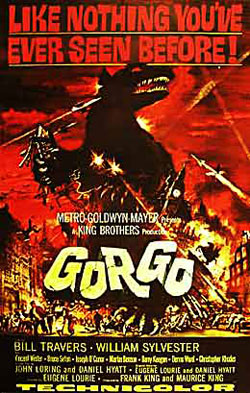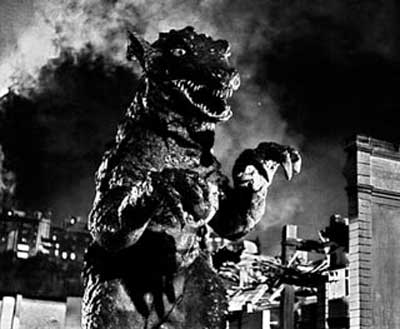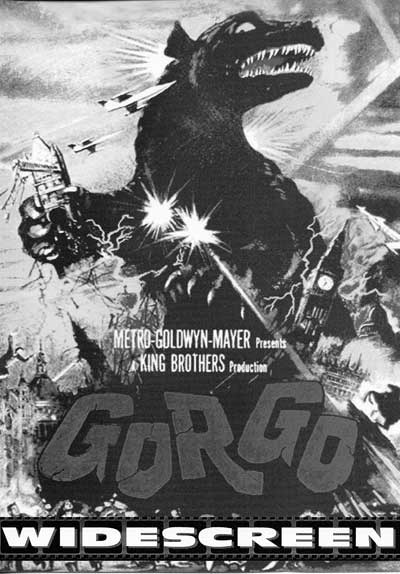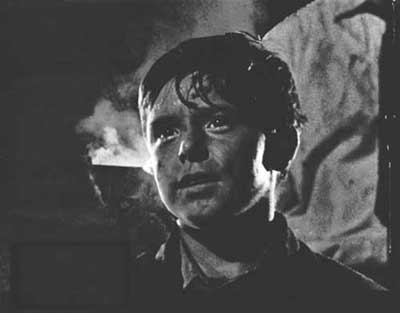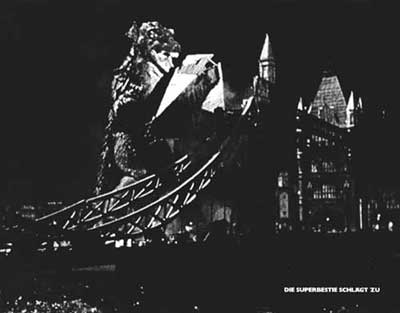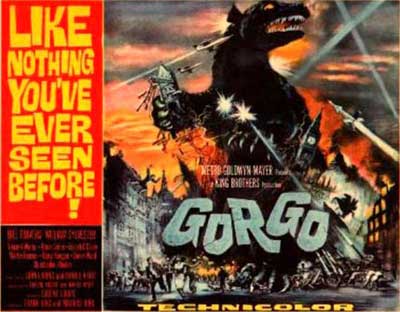SYNOPSIS:
A salvage vessle is nearly sunk off the Irish coast by an undersea earthquake. A few nights later, a walking sea monster tangles with the fishing boats and enters the town. The salvage vessel captures Gorgo and takes it to London for display. Gorgo’s mother, who is upset and significantly larger follows his trail to London leaving a wake of destruction in her path
REVIEW:
Directed by Eugene Lourié
Written by John Loring and Daniel Hyatt
Starring Bill Travers, William Sylvester, Christopher Rhodes and Vincent Winter
DVD from VCI Entertainment
With all the fuss and feathers over Universal, Hammer and Toho, one would think no one else made any horror or science fiction films. Oh, there’s lip service paid to Amicus and AIP gets a shout out on a regular basis but let’s face it. UH&T are the Big Three and I too am guilty of pushing the others to the back burner when a healthy Godzilla debate presents itself, as past articles will witness. But for right here and now, we’re gonna get down and dirty with the UK’s own seafaring monster—and his mama—and convince you that Gorgo has as much right to raise his scaly head proudly as any Godzilla incarnation that Japan can throw at you.
Let’s immediately dispense with the camp value, shall we? The rubber fish-like things that were blown up from the bottom of the sea are a scream. Sorry guys, I know this was 1961 and I don’t hold it against you, but attention must be paid to the lesser points of the film. VCI put this DVD together well with the exception that the sound is so low I had to turn it up to the 50s to be able to hear the damned thing. And that’s it on the lesser points. The digitally remastered print itself is beautiful and presented in a Widescreen (1.85:1) “Destruction” Edition.
Other special features include a photo gallery, original trailer bios, film-ographies and a mini-documentary not to mention the cool animated titles; and of course, the story itself which is such a joy. We meet the main players when their salvage boat becomes disabled and they put in to Nara Island looking for assistance. Young Sean (Winter), a lad of 9 or 10, greets them at the door of the Harbor Master’s cottage and shows them what his guardian (“I work for him!”) the Master-cum-archeologist has been collecting. Enter the taciturn McCartin (Rhodes) who is, of course, suspicious but will come around eventually. He has to.
It’s formula. Dire warnings about the sea monster bring chuckles to the Americans and of course, they are not welcomed and told they must be gone in 24 hours. It’s the law.
This film has long been a favorite of mine. One of the things I love about Gorgo is the first sighting of the creature. Our heroes, Joe Ryan (Travers) and Sam Slade (Sylvester), are swimming around under the British seas and there floats our little darling, doggy paddling for all he’s worth. No death and destruction here, just an underwater scene with a monster followed by a quick cut to the men in the boat. Joe is smoking a cigarette and toweling his hair dry. Sam asks, “What did you see Joe?” And the answer, after a pause is, “I don’t know but I don’t ever want to see it again.”
They’re really very blasé about the entire thing and the shot could easily be put into milady’s boudoir with the one asking the other, “Was it good for you?” Watch it again and you’ll see what I mean. Anyway! Shortly thereafter Gorgo comes strolling onto the beach and the village is replete with screaming fisherman and townspeople in their dinghies and, bless them, their inevitable lighted torches. You simply can not be a classic monster flick without townspeople waving torches around and setting something on fire; in this case, a few boats. There’s much discussion and speculation next morning and then the inevitable question, “Ever think what a thing like that might be worth alive?” And so now we’re into the meat of it.
Ten fathoms down in a diving bell, Joe scans Poseidon’s depths and doesn’t have half as much fun as Professor Nesbitt had in 1953’s The Beast from 20,000 Fathoms. We got to see some underwater life there in the Hudson (or was it the East River?) but off the Irish coast all we got were rocks and a very pissed off Sea Monster of Nara Island. Perhaps that’s because Joe stopped at ten fathoms but I think it’s because the film trend had once again shifted in presentation. Whereas in the 30s and 40s you could always count on a musical break in a film, by the 50s the only music you got was if the film itself was a musical, and the score of course.
In monster films of the 30s and on up to the 50s you got a bit of actual science and information but by the 60s they began the trend of going more for sheer shock value. Now Gorgo does give one a little reality with the precaution to keep the creature’s skin wet and etc., but it was one of the last to try and present any science along with the fiction. At least, any of the science that could stir a young imagination and help to lead it toward further learning and whether that was the intention of earlier filmmakers or not is hardly a point for debate; that many of the films succeeded in doing so is. This, of course, had to do with the screenwriter but I won’t go into that here. Screenwriting is discussed in far more detail in magazines like Mondo Cult (Issue 2). But I digress. Our Seanie and the beast seem to have an affinity for each other and so he joins the intrepid band of monster catchers. Once Gorgo is in the net, we’re off to Battersea via London to join Dorkins London Circus where the beastie manages to get loose. Picture my astonishment. Naturally a stray handler bites the dust in this scene, having been knocked flat by Gorgo’s tail as he is forced into his holding pen by brave fellows with flamethrowers. And so here we are in London where the world can view this wonder of the deep with their own eager eyeballs.
The learned men of science now inform Joe and Sam that they don’t have a monster on their hands at all but a monster’s offspring. A sobering thought to be sure and now that it’s official, the government sticks its twitching nose into the act.
Meanwhile, back at Nara Island, Gorgo’s mother has noticed that her baby didn’t come home for dinner. Assuming, as any mother of that time period would, that her darling had run off to join the circus, she looks for him in the village. Not finding him, she loses her temper and then, having rampaged, heads East to London and the famed bridge. Her arrival there prompted Forrest J Ackerman—legendary editor of the original Famous Monsters of Filmland—to present one of his most famous photo captions in the history of horror magazines: “London Bridge is falling down when Gorgo’s mama comes to town.” Of course, she actually destroyed Tower Bridge but I guess we can let it go as artistic license.
Enter Her Majesty’s Armed Forces. Battleships, jets, any number of military machinations are now being employed in the search for Mama G and by God if they don’t find her. There’s some cool footage of jets landing on aircraft carriers in this film. I couldn’t tell you if it’s British or US but it sure looks American to me. I’m sure some informed fan will write and let me know. Anyway, Mama tires of playing boats in the Irish Sea when she scuttles the Royal Oak, and moves on to England, determined to get her kid home where he belongs. The Admiralty wants to stop her before she reaches the coastal defenses but those gunners are lousy shots and she makes landfall in time for the evening show. Time to hit the famed English bomb shelters again!
There’s a grand battle against the backdrop of London Town, Gorgo is crying for his mother and landmarks are being crushed to rubble; a man awaits Rapture with a sign bearing the legend, “Repent! The End Is Near!” and no one can figure out what to do to end the destruction. Not even electrocution works on this 200 foot high refugee from before recorded time. Mama finally locates her young one and after a certain amount of scolding, they walk off together and submerge themselves in the cooling water of the Thames, presumably never to be seen again.
Gorgo offers a twist on the giant lizard genre with the advent of the mother/child storyline. While both the Rhedosaurus from Beast and Godzilla seem to run rampant for no apparent reason (though it is my belief that they’re both frightened out of their wits by their unusual circumstances), Gorgo’s writers gave a purpose to this particular Kraken in that she was hunting for something and out of her usual environment (water) she’s pretty damned clumsy. King Brothers Productions fit a hell of a lot into 78 minutes and they did it pretty damned well for a fairly low budget flick. Why they named the creature after one of the Gorgon sisters is beyond me though. I’d have thought if they were going to use Greek Mythology, they’d come up with some kind of Kraken association, but there you are.
At least it makes more sense than Godzilla which is nothing more nor less than the Americanization of the character name, Gojira. Some would argue of course, claiming it means God Lizard of God of the Lizards. What does Gojira mean? I haven’t a clue, though some claim it is a pairing of two Japanese words: gorira (meaning gorilla or ape) and kujira (meaning whale). The bottom line (so to speak) is that Gorgo ranks up there with the big boys and should be glommed onto as soon as you’re done reading this article. You can get it from vcientertainment.com and it’s worth every nickel.
 Horror News | HNN Official Site | Horror Movies,Trailers, Reviews
Horror News | HNN Official Site | Horror Movies,Trailers, Reviews
